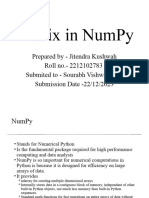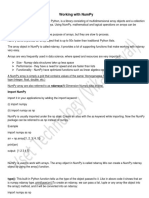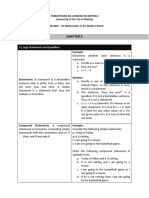0% found this document useful (0 votes)
46 views12 pagesLecture 2 - NumPy I
arr2d = np.array([[1, 2, 3], [4, 5, 6], [7, 8, 9]])
print(arr2d[:,2]) #[[3] [6] [9]]
print(arr2d[1,1:]) #[5 6]
Uploaded by
Ankit SinghCopyright
© © All Rights Reserved
We take content rights seriously. If you suspect this is your content, claim it here.
Available Formats
Download as PPTX, PDF, TXT or read online on Scribd
0% found this document useful (0 votes)
46 views12 pagesLecture 2 - NumPy I
arr2d = np.array([[1, 2, 3], [4, 5, 6], [7, 8, 9]])
print(arr2d[:,2]) #[[3] [6] [9]]
print(arr2d[1,1:]) #[5 6]
Uploaded by
Ankit SinghCopyright
© © All Rights Reserved
We take content rights seriously. If you suspect this is your content, claim it here.
Available Formats
Download as PPTX, PDF, TXT or read online on Scribd
/ 12
























































































